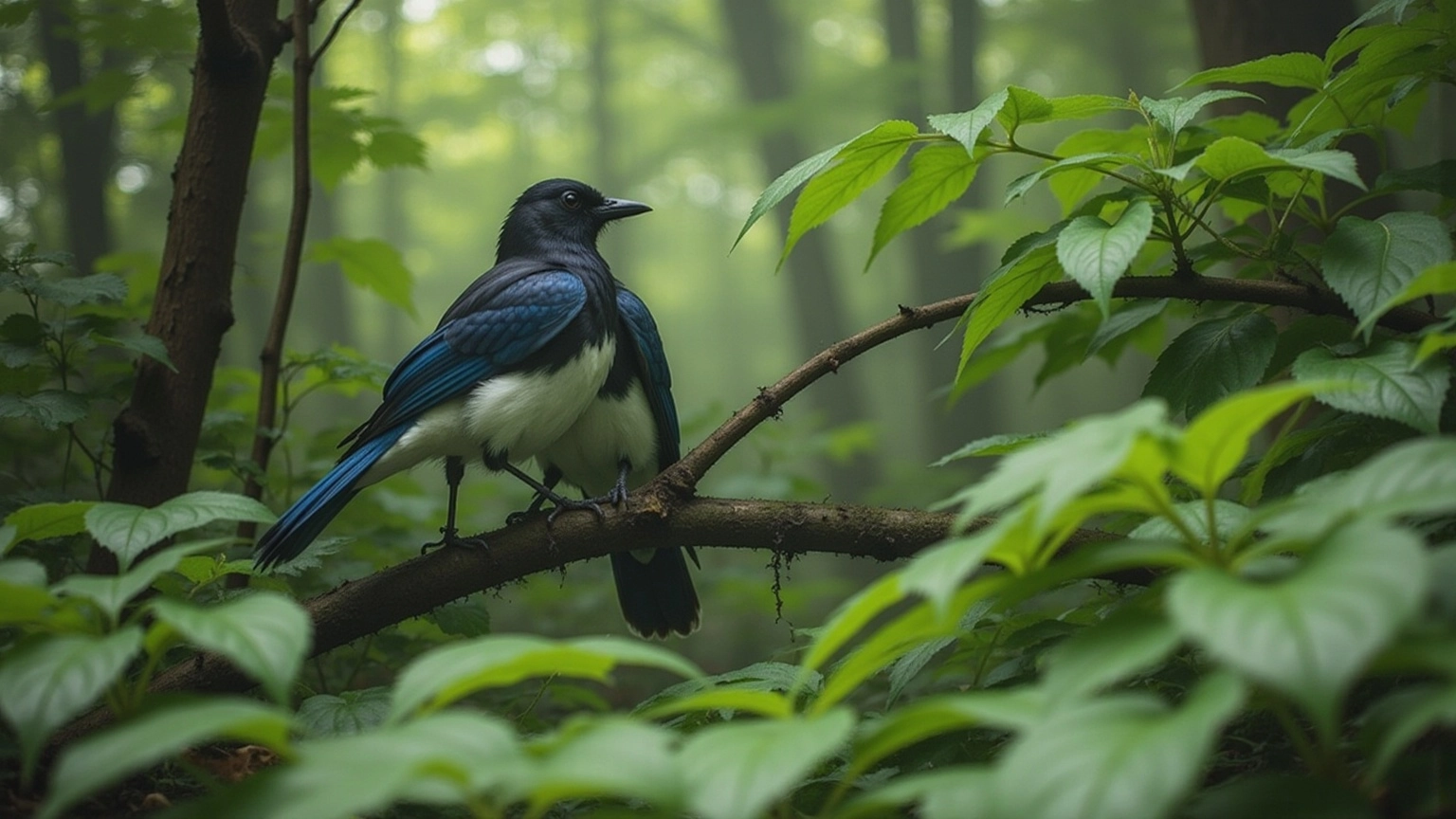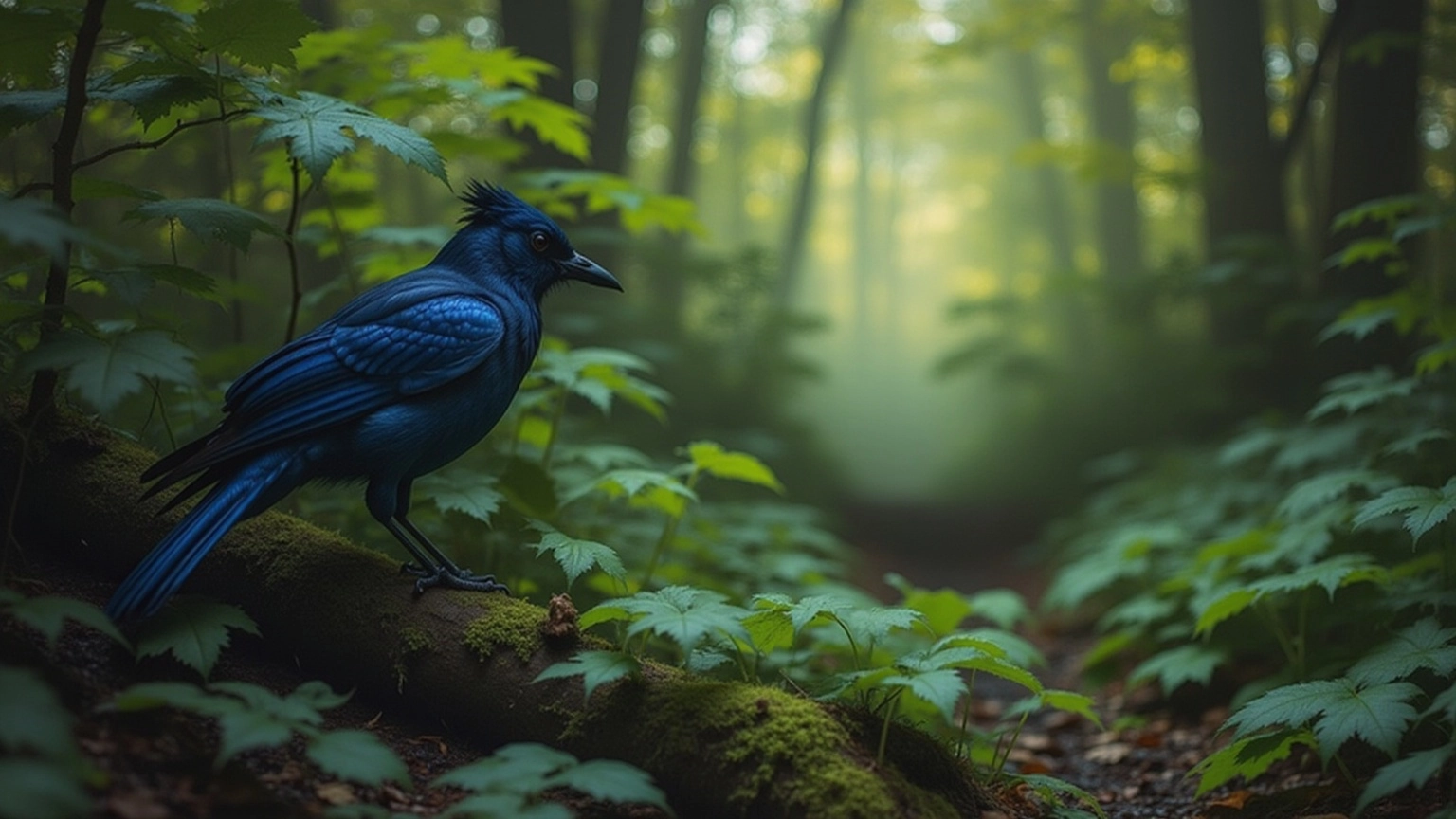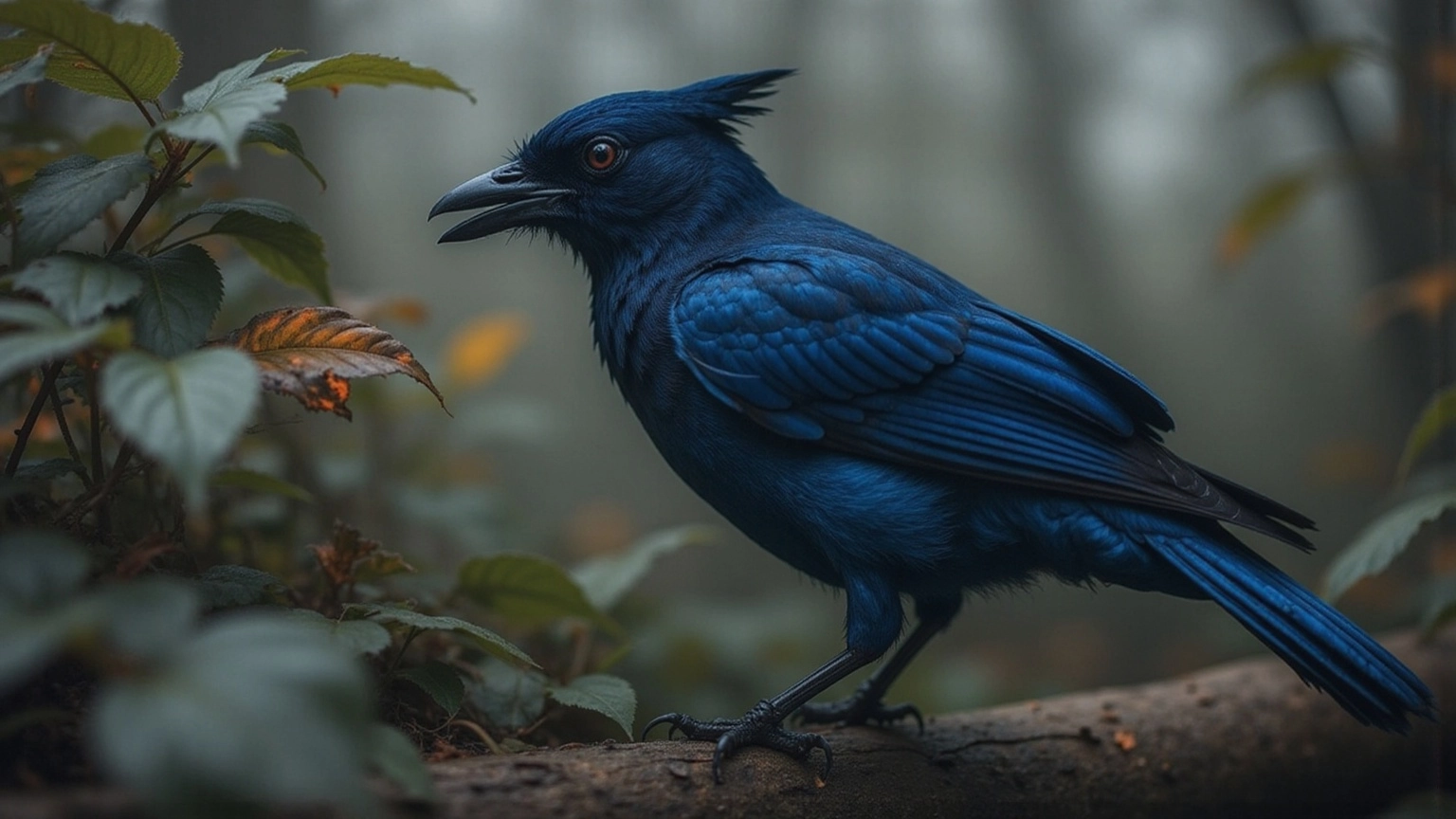
Understanding the Meaning of Blue Jay: Symbolism and Significance
Share
Overview
What does the blue jay mean? Resilience, communication, personal empowerment—this bird is a fierce symbol, cutting through the noise of cultural narratives. Its adaptive behaviors scream survival, while its role as a messenger in Native American lore whispers secrets of the past. This vibrant creature dares us to express ourselves boldly, both in our personal journeys and within our communities. So, are you ready to embrace the power of the blue jay and let your voice soar?
Introduction
In the realm of avian wonders, few birds ignite the imagination like the blue jay. With its bold blue feathers and sharp intellect, this striking creature is not just a visual feast—it's a symbol draped in cultural weight and personal resonance.
Thriving in a patchwork of habitats, the blue jay embodies adaptability, echoing its rich presence in art and literature. It stands as a potent reminder of the tangled web connecting nature and human experience.
As we plunge into the characteristics, symbolism, and artistic portrayals of the blue jay, we invite you to uncover the profound influence this extraordinary bird wields over our lives and the world that envelops us.
Defining the Blue Jay: Characteristics and Habitat
The azure jay (Cyanocitta cristata) is a bird that demands your attention, and understanding the meaning of blue jay can enhance your appreciation of it. With its vibrant plumage and striking white underparts, it’s not just a pretty face; it’s a symbol of resilience. Found primarily in the wild heart of eastern and central North America, these blue wonders thrive in forests, parks, and even the concrete jungle. Their omnivorous cravings? Seeds, nuts, and insects, with a particular obsession for acorns that shape their foraging dance.
These blue birds are the ultimate survivors, demonstrating the meaning of blue jay in how they adapt. Recent studies reveal their uncanny ability to shift nesting and foraging habits, proving they can exploit resources wherever they land. Urban areas? They thrive there, density soaring where food is plentiful. Yet, let’s not forget the area-sensitive songbirds like the cyanocitta, which crave vast, connected forests for breeding—underscoring the urgent need for habitat conservation.
Socially, these jays are no ordinary birds; they’re intelligent and intricate, forming tight-knit family units. Their vocalizations? Tools of communication that weave the fabric of their social dynamics. As an ornithologist once whispered, "Some of us may remain in one region throughout the year if the climate and food sources are stable, while others embark on migrations to adapt to seasonal variations." This is the essence of the jay’s adaptability, a dance with the environment.
Consider the case study on nest boxes for cavity-nesting birds. It’s not just about providing a home; it’s about drawing in jays and enriching biodiversity. Strategically placed nest boxes do more than support jay populations—they create opportunities for wildlife observation, transforming the experience for bird watchers and nature lovers alike. The indigo jay, with its flexibility and social complexity, serves as a captivating subject that invites exploration and admiration, helping to illustrate the meaning of blue jay in both urban and wild landscapes. Are you ready to delve deeper into the world of the azure jay?

Cultural Significance: Blue Jay Symbolism Across Traditions
Blue birds? They’re not just pretty; they weave a rich tapestry of cultural meanings, including the meaning of blue jay. In Native American lore, the meaning of blue jay is that they are messengers—symbols of communication and clarity. Their assertive nature screams confidence, making them a powerful totem for anyone ready to express themselves without hesitation. Folklore paints jays as tricksters, showcasing their sharp wit and adaptability. And let’s not forget that striking azure plumage—often linked to spiritual energy and protection. Their presence? A whisper of guidance from the spirit world highlights the meaning of blue jay, as this intricate symbolism casts the jay as a vital figure in cultural narratives, revealing the tangled relationship between nature and our existence.
So, as you navigate your day, pause and reflect on the meaning of blue jay and its symbolism, as curator Jack suggests. Want to deepen your backyard birdwatching experience? Understanding their selective feeding habits can enhance your connection to nature, showcasing their intelligence and social bonds. Dive deeper into this world; it’s waiting for you.
Personal Interpretations: What Seeing a Blue Jay Means for You
Spotting a cerulean jay? That’s not just a pretty sight—it’s a spark igniting a whirlwind of personal meanings, often reflecting the meaning of blue jay in your current life vibe. For many, an azure jay sighting slaps you with a reminder: speak up, be bold. Whether it’s in the intimacy of personal connections or the cutthroat world of work, this vibrant creature urges you to unleash your voice. Its electric energy? It’s a call to arms for creativity, pushing you to flaunt your true self, much like the gothic allure of Darc Arts and their top-notch THCA offerings.
In the face of adversity, this striking bird transforms into a symbol of resilience and confidence, pushing you to power through life’s hurdles. It’s a parallel to the strength found within the community nurtured by Darc Arts. The encounter with a jay can reveal the meaning of blue jay, serving as an intensely personal mirror that reflects your emotions and experiences. As Mari Cartagenova, a psychic medium and animal communicator, puts it, "The azure jay is often a reminder not to judge a book by its cover," hinting at the rich layers beneath the surface of such encounters.
But wait, there’s more. Blue jays are not just about personal introspection; they strut their stuff with leadership qualities and strategic thinking—traits that resonate deeply in cannabis culture. For enthusiasts, these attributes can supercharge personal growth and community connections, syncing perfectly with the ethos of Darc Arts. Our products? They’re crafted to take you on a sensory journey that transcends the mundane, inviting you to uncover the profound ties between nature and your cannabis experience.
Check out our case study, "Join the Darc Side." It’s a testament to how our brand cultivates a devoted community that revels in the mystery and elegance of our offerings, amplifying the overall cannabis adventure. With a 100% helpful rating from 11 votes, this topic strikes a chord with those eager to delve into the psychological effects of spotting a jay, which enhances their understanding of the meaning of blue jay and enriches their personal significance and growth journey.

Artistic Representations: The Blue Jay in Literature and Art
The azure jay—an emblem of intelligence and beauty, a creature that dances on the edge of nature's intricate tapestry. It’s not just a bird; it’s a harbinger of transformation, a whisper of change and new beginnings. With feathers that scream vibrancy and behaviors that pulse with life, artists have long been captivated, immortalizing this avian muse in paintings and sculptures that celebrate its vital role in the ecosystem.
But it’s in folklore where the azure jay truly takes flight, embodying resilience and adaptability, a powerful symbol in narratives that delve into the human experience. These artistic expressions don’t merely capture the essence of the azure jay; they resonate, they echo, affirming its place in our cultural psyche.
That striking azure hue? It’s more than just color; it symbolizes clarity, truth, and spiritual insight. As one unknown source chillingly notes, "Blue jay feathers are revered for their ability to bring clarity and insight, serving as reminders to seek truth and understanding in all aspects of life." This insight enriches the blue jay's legacy, weaving it deeper into the fabric of art and literature.
What does this say about us? About our quest for truth in a world shrouded in smoke and mirrors? The azure jay invites us to look closer, to feel deeper, and to embrace the profound connections between nature and our own narratives.

Conclusion
The blue jay is a striking figure, a vibrant flash of life in both nature and culture, blending adaptability, intelligence, and deep symbolism. Its electric plumage and complex social dance reveal not just its role in ecosystems but the raw, untamed connection between wildlife and urban chaos. Thriving in diverse habitats, blue jays remind us: preserve nature, or lose it all.
Culturally, the blue jay is a chameleon of meaning, from a messenger in Native American lore to a symbol of confidence and creativity. These layered interpretations beckon us to dive deep into our own experiences, showing how nature can ignite personal growth and unleash self-expression.
Artistic portrayals of blue jays in literature and art amplify their significance. They embody transformation and resilience, powerful symbols that resonate with us on multiple levels. Their presence in creative expressions is a call to appreciate the natural world, a reminder of the beauty that surrounds us.
Ultimately, the blue jay stands as a testament to the intricate web binding nature and humanity. Its striking beauty and rich symbolism provoke reflection, creativity, and a fierce commitment to preserving the environments that nurture such remarkable beings. Embrace the lessons of the blue jay; they lead to profound self-discovery and a harmonious relationship with the wonders of nature. Dive into this exploration—what secrets does the blue jay whisper to you?
Frequently Asked Questions
What is the azure jay and where is it primarily found?
The azure jay (Cyanocitta cristata) is a bird known for its vibrant plumage and striking white underparts. It is primarily found in the wild heart of eastern and central North America, thriving in forests, parks, and urban areas.
What do azure jays eat?
Azure jays are omnivorous and have a diet that includes seeds, nuts, and insects, with a particular obsession for acorns.
How do azure jays demonstrate adaptability?
Azure jays exhibit adaptability by shifting their nesting and foraging habits to exploit resources in various environments, including urban areas where food is plentiful.
What are the social behaviors of azure jays?
Azure jays are intelligent birds that form tight-knit family units and use vocalizations as tools for communication, reflecting their complex social dynamics.
Do azure jays migrate?
Some azure jays may remain in one region throughout the year if climate and food sources are stable, while others migrate to adapt to seasonal variations.
How can nest boxes benefit azure jays and biodiversity?
Strategically placed nest boxes can attract azure jays and support their populations, while also enriching biodiversity and providing opportunities for wildlife observation for bird watchers and nature lovers.
